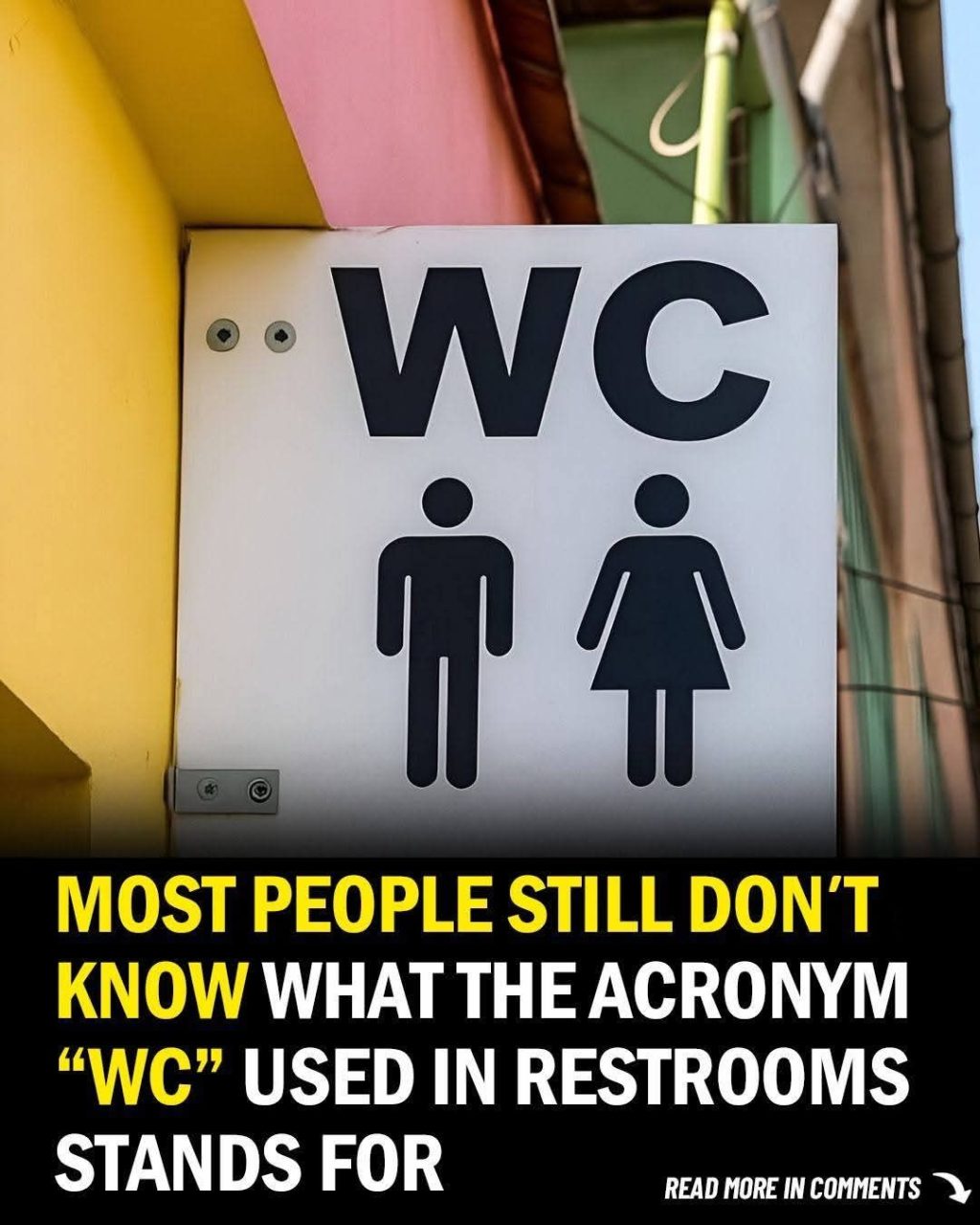
If you’ve ever traveled internationally or even just walked into a public restroom somewhere in Europe, you’ve probably seen a sign that says “WC.”
It’s one of those things we see all the time but never stop to think about. What does it actually mean? Why not just say toilet, bathroom, or restroom like everyone else?
Well, the answer is surprisingly historical — and a little bit royal.
💡 What “WC” Really Stands For
The abbreviation “WC” stands for “Water Closet.”
Yes, closet!
The term dates back to the 19th century when indoor plumbing was first being introduced in Europe, especially in the United Kingdom. At the time, toilets were often installed in small, private rooms that looked like closets — hence the term “Water Closet.”
It simply referred to a small enclosed space (a “closet”) that had a water-flushing toilet inside.
🚽 A Bit of History
Back in the 1800s, having running water inside your home was considered a luxury. Early versions of flush toilets were quite new — and since they were usually tucked away in a tiny space separate from the main living area, the term “Water Closet” became the polite, upper-class way to refer to it.
Over time, the abbreviation “WC” began appearing on building plans, hotel signs, and public facilities — and the term stuck, especially across Europe and Asia.
Even today, if you visit countries like Germany, France, Italy, or Japan, you’ll find “WC” signs everywhere instead of “Toilet” or “Restroom.”
🧭 Why You’ll Still See It Today
So why hasn’t it disappeared?
Because “WC” is universally understood.
While “bathroom,” “restroom,” and “toilet” vary from country to country, “WC” has become a kind of international symbol — a neutral, recognizable abbreviation that transcends language barriers.
It’s also a little more polite in certain cultures. Saying “toilet” can be considered too direct in some parts of Europe, so “WC” remains the discreet, old-fashioned alternative.
🌍 Fun Fact: Different Names Around the World
- UK: “Loo” or “WC”
- USA: “Restroom” or “Bathroom”
- France: “Toilettes”
- Germany: “WC” or “Toilette”
- Italy: “Bagno”
- Japan: “Toire” (トイレ, borrowed from English “toilet”)
No matter where you go, the symbols might look different, but the goal is always the same — finding that little door marked WC when nature calls!
🧻 The Modern Twist
Interestingly, modern building plans and design standards still use “WC” as a technical term. Architects and engineers label bathrooms as “WC” in blueprints — showing just how deeply rooted the term is, even centuries later.
So next time you’re traveling and you see “WC” on a sign, you’ll know it’s not some mysterious code — it’s just history following you into the restroom.
🚻 In Short:
- WC = Water Closet
- Originated in 19th-century England
- Refers to early indoor toilets with water flushing systems
- Still used globally as a universal symbol for restrooms
✨ Final Thought
It’s funny how something as simple as two little letters can carry over a hundred years of history and etiquette.
So the next time someone asks what “WC” stands for, you can smile and say,
“It’s short for Water Closet — and it’s been around since the Victorian era!”





